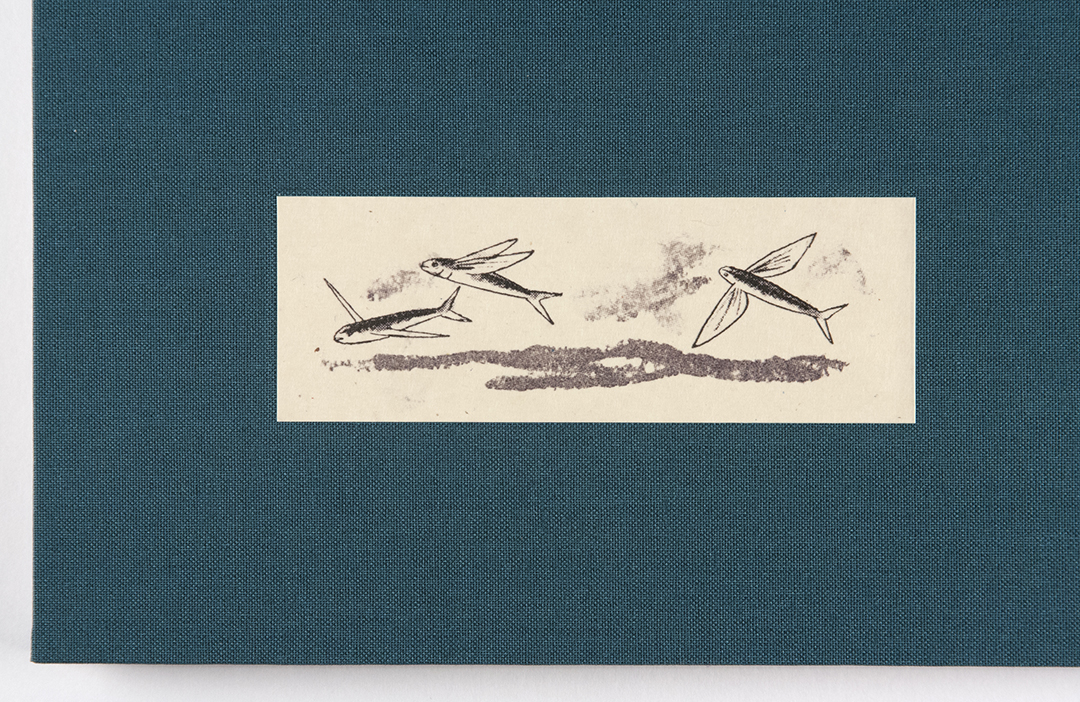I’ve recently finished an enclosure and light repairs for a Life magazine featuring Ernest Hemmingway’s Old Man and the Sea. The magazine was brought to me by a friend, who purchased it online, to be safely bound as a gift. Due to the large and heavy nature of the magazine, as well as its slightly worn condition, there were unique challenges to solve. The covers were detached from the rest of the text while the remainder of the pages seemed in pretty good shape which were kept together by three staples. The staples were carefully removed first because the existing holes would be used to attach the pages to their new cover with an unbleached linen thread. Without the staples, it was easier to access the areas that needed mending, especially the small tears around the staples as they received the most wear. The few minor tears were repaired with Japanese tissue and a very thin paste.
The binding method I decided on would accommodate the detached covers but also be sturdy enough to hold the heavy magazine. Through a few conversations with the owner of the piece, it was decided that the covers wouldn’t be reattached but still kept with the materials. We also chose two illustrations, from the story, to inset into the cover of the book, one on front and one on the back.
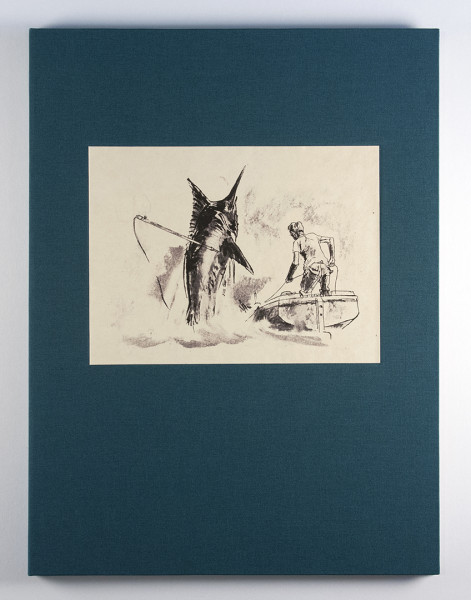
The images were printed on handmade flax paper that matched the color of the aged magazine paper. For the cover material, I ordered Iris book cloth that matched the accent color featured in the illustrations. With the variety of colors available, I was able to get an almost an exact match.
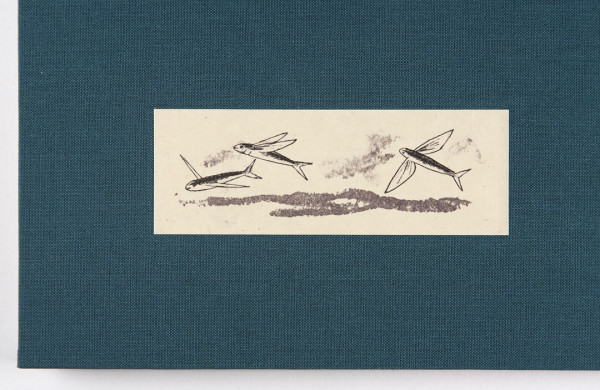
In order to keep the covers with the magazine, I decided to create a clear pocket, framed in mat-board, at the front and back that would act as endpapers. This way they could easily be viewed in place, minimizing potential damage to the already worn sheets, or be taken out (and gingerly put back in) through an opening at the top.
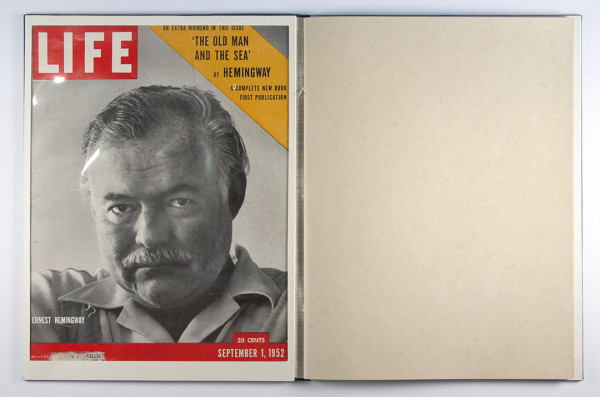
The folio was wrapped in acid free card stock material to avoid wear on the first and last page. This would also provide additional support for the sewing. I’ve said it a few times, but the pages of these old Life magazines are heavy and large so casual viewing becomes unwieldy without appropriate support.
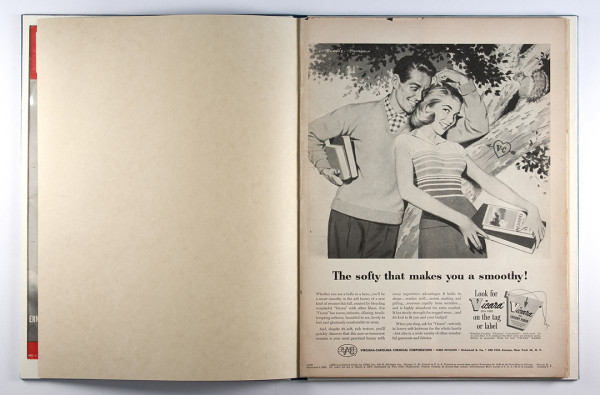
The magazine starts just after the acid free wrapper. Note the fantastic ad for “the luxury fiber”.
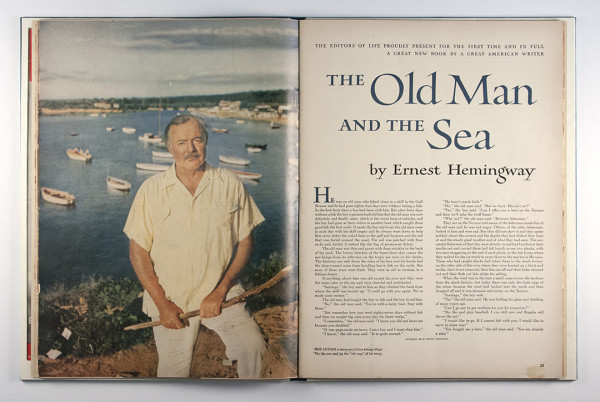
The story is in the middle of the magazine, which is a nice coincidence for practical reasons. Since this is the “main attraction” of the magazine, those pages will get more use. Being at the middle though, the preceding and following pages drape wonderfully to either side and the magazine relaxes open.
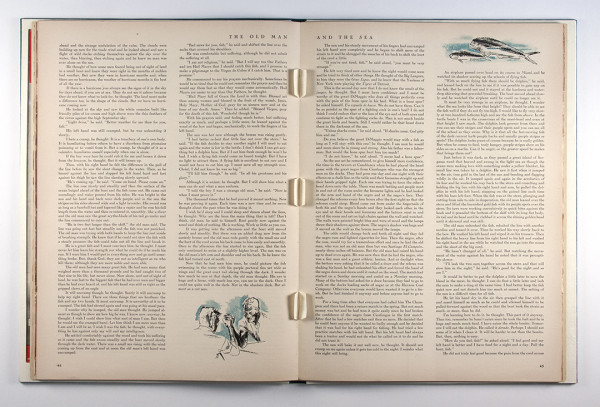
At the very center of the magazine, where the staples were before, I added tissue stays to reinforce the areas where the thread would pass through to connect to the spine lining. Like the acid free card stock wrapper, the tissue will help take the brunt of stress off of the original pages while the magazine is being used.
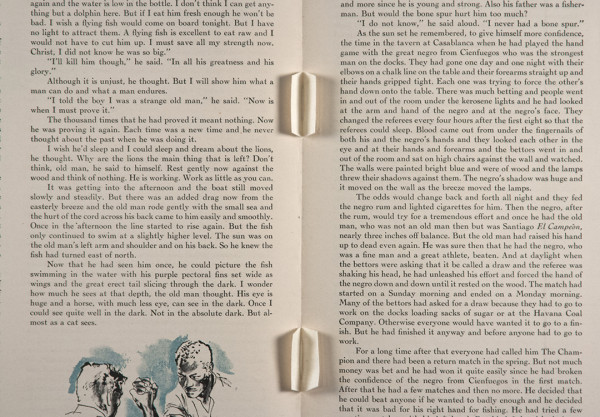
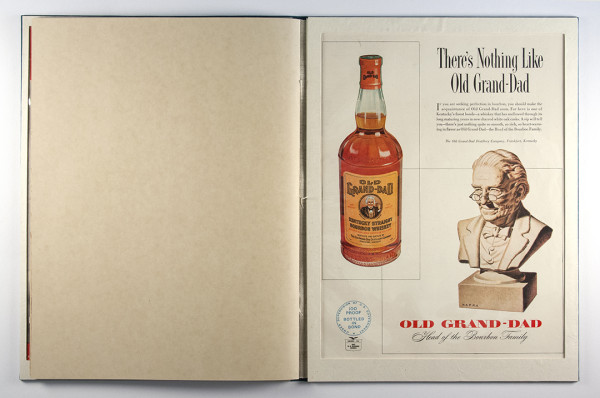
I’m really satisfied with the outcome and feel like this was a great solution for this situation. There are a few things I would like to tweak and play with to make this binding format even better for more fragile materials. However, I am happy that I was able to provide a protective and attractive binding solution that allows the magazine to be loved safely.
